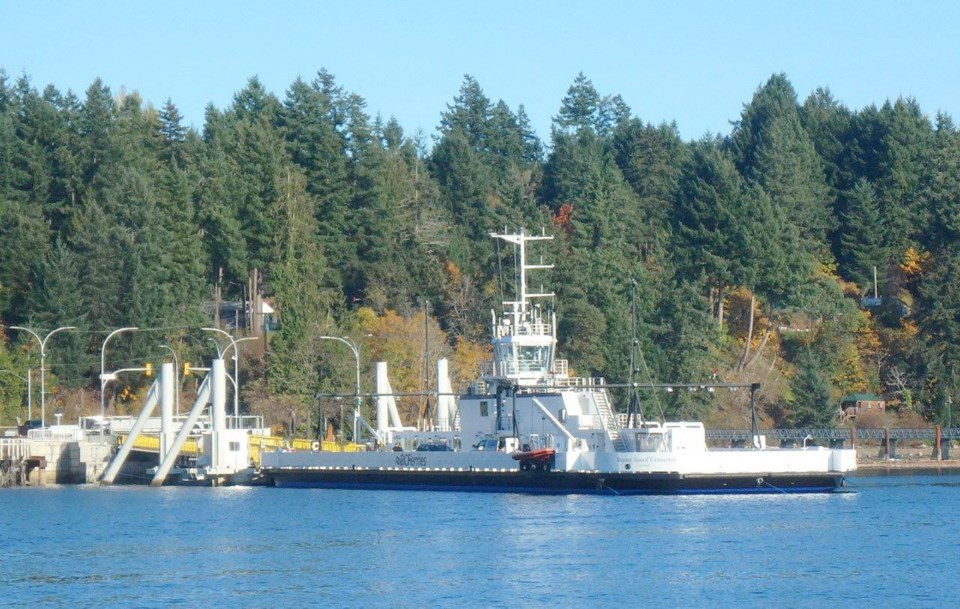 Grumpy McLoughlin isn’t happy. The owner of the Denman Island General Store (he says his official title is manager, propane tank filler and chief economist) knows his island’s fortunes ebb and flow with B.C. Ferries fares.
Grumpy McLoughlin isn’t happy. The owner of the Denman Island General Store (he says his official title is manager, propane tank filler and chief economist) knows his island’s fortunes ebb and flow with B.C. Ferries fares.
Lately, there has been a lot of ebb. Between 2003, when the ferry service was sort-of privatized, and the low-water mark in 2015, traffic on the Denman and Hornby Island routes fell 17 per cent. That happened even as the population of both islands grew.
No coincidence that ridership fell as fares soared. The round trip from Vancouver Island to Denman for mom, dad and a couple of teens is now $66.35. Double that if you’re continuing on to Hornby.
That’s more than twice what it cost in 2003. In fact, pre-paid fares — the ones locals use — on the 10-minute Denman and Hornby crossings have soared more than 160 per cent since then, a period in which the consumer price index rose by only 18 per cent, according to advocates for ferry-dependent communities.
The higher fares don’t faze those who holiday for a week or two, but they have acted like a tourniquet on short-stay tourism — the day-trippers from Courtenay or Nanaimo, or the Americans looking for a brief side-trip.
“It’s just far too much money to come over for the day,” McLoughlin says. “Our survival time is the June-to-September window, the tourist season. We’re seeing a big drop in those numbers.”
It’s a similar story elsewhere on the coast, say those who sit on the local committees that advise B.C. Ferries. Tourism has suffered. Businesses are bailing out. Real estate prices are lagging.
“Continued ferry-fare increases have had a real and increasingly devastating impact on our communities,” declares a new report released by the coastal advisory committees.
What’s worse, according to statistics in the report, is that others in the province aren’t treated the same way. Relative to other British Columbian transportation users, ferry passengers are getting the shaft.
Across the system, ferry fares have doubled since 2003. As of 2016, farebox revenue accounted for 101 per cent of B.C. Ferries’ operating costs.
Compare that to the Lower Mainland’s Translink system, where fares account for 41 per cent of the operating budget, or B.C. Transit, where passengers pay just 31 per cent of the cost. (And let’s not even mention B.C.’s fare-free inland ferry system.)
Comparable lifeline ferry systems also run with a higher level of subsidy: Washington State Ferries collects just 70 per cent of its operating costs in fares, while the figure is a mere 25 per cent for the Alaska Marine Highway (note the use of the word “highway,” an important philosophical inflection).
It’s no coincidence that the report came out less than two months before British Columbians go to the polls. “Crippling ferry fares are an election issue,” it declared. It wants voters to buttonhole candidates on the issue prior to the May 9 vote.
The provincial government can, rightly, argue that its own contributions to the ferry system have risen, too, from $104 million in 2004 to $169 million last year. Still, the overall amount raised through fares rose to 69 per cent of total revenue in 2016 from 64 in 2003.
That revenue is expected to cover not just the operating budget but capital costs — new ferries and terminals.
Funny how the language changes when we talk about this stuff. When it comes to building new ferries, people grumble about subsidizing the woolly-headed hippies and grey-haired retirees who choose to live in leafy isolation on the coast.
Yet when $85 million is poured into the McKenzie Avenue interchange, or $1 billion is spent on the South Fraser Perimeter Road, the subsidy is labelled “transportation infrastructure spending.”
In truth, those in ferry-dependent communities don’t see a lot of the government money that those in larger centres do. Victoria is getting half a billion bucks from the provincial and federal governments for a sewage-treatment system.
Nobody from government dangled a subsidy (or offered to grab a shovel) when it came time to dig Grumpy McLoughlin’s septic field.



